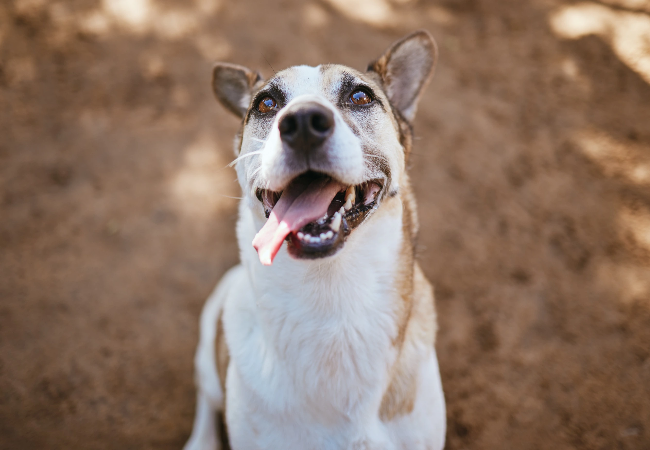A Vet’s Guide to Finding a Lost Dog: Prevention, Search & Reunion 2025 🐶🔍

In this article
A Vet’s Guide to Finding a Lost Dog: Prevention, Search & Reunion 2025 🐶🔍
By Dr. Duncan Houston BVSc
Hi—I’m Dr Duncan Houston BVSc, veterinarian and Ask A Vet founder. A lost dog is every pet parent’s worst fear. But with proactive prevention, fast action, and the right tools, you can dramatically increase their chances of coming home safely. In this vet‑approved guide, I'll walk you through ID essentials, search strategies, tech tools like GPS trackers and premium health monitors, and how Ask A Vet QR tags can help stop your dog from going missing in the first place—designed for 2025 and beyond. 🩺🐾
1. Start with ID: Tags & Microchips
- 🔖 Collar with clear ID tags: Include name, your contact info, and a “REWARD” note.
- 💉 Microchip: Mandatory—ensure it’s registered and your details are up-to-date.
- 📱 Ask A Vet QR Pet ID Tag: Scannable by any smartphone—links to your dog’s profile (owner info, medical history, trackers). Ideal if your dog wanders far from home or is shy and won’t approach strangers.
- 💬 Smart tags like Petkey: Connect alerts to vet clinics, shelters, neighbors within a radius.
2. Premium Tech: GPS & Health Trackers
Next-level safety: GPS collars allow real-time location tracking via app or SMS:
- 📡 GPS trackers (e.g., Fi Collar, Findster Duo): Track your dog live and receive alerts if they leave a defined safe zone.
- 📶 Bluetooth tags (e.g., Apple AirTag, Pawscout): Detect nearby phones silently and alert you if your pup is within range.
- 📊 Health-track collars: Monitor activity, rest, even body temperature—alert if behavior suddenly changes.
- 🛡️ Lockable collars: Prevent collar removal by other animals.
3. Act Quickly: What to Do When Your Dog’s Lost
- ✔️ Start searching immediately: Begin where they were last seen; call their name softly with treats or toys—as encouraged by The Spruce Pets.
- ✔️ Scatter familiar scents (crate, bedding, your worn shirt) near the area—they can guide your dog home.
- ✔️ Alert local shelters & vets: Visit if possible—shelter descriptions are often unreliable.
- ✔️ Post flyers: Include a clear photo, last seen location, QR tag info, and reward. Use weather-proof tape or nails so they hold. Include “DO NOT CHASE” to prevent spooking.
- ✔️ Leverage social media: Post on Nextdoor, local Nextdoor neighbors groups, and Petco Love Lost. One success story shows how they quickly reunited pet owners via facial recognition.
- ✔️ Use image-recognition services: Platforms like Petco Love Lost match found pets using AI to photos.
- ✔️ Professional trackers: Certified pet trackers (like Carmen Brothers) use bloodhounds, scent trails, and psychology to locate lost dogs within hours.
4. Safety Tips During the Search
- 🚶Don’t chase; sit quietly and call—dogs may hide from fast-approaching humans.
- 🦠 If encountering stray dogs, keep your dog on-leash and vaccinate if reuniting.
- 📞 Update every shelter and rescuer daily to share fresh sightings or photos.
5. Prevent Your Dog from Getting Lost Again
- 🔐 Double-check fences/gates; consider dog-friendly "pet doors" with electronic safety features.
- 🕰️ Use GPS geofencing to get real-time alerts if they escape.
- 🧠 Practice reliable “come” cues, especially for off-leash areas.
- 🧥 Keep coat and tag info updated on QR tag profile. Renew subscription for GPS & health trackers.
- 📅 Microchip registry: Update your info regularly—DNA study shows 35% of reunions fail due to outdated contact info.
6. Use Ask A Vet Tools After Reunion
- QR tag scans instantly notify owner and vets—streamlining return regardless of location.
- Telehealth check-in: Assess for stress signs or injury after a disappearance.
- Health data review: Upload tracker logs to spot changes indicating medical concerns.
7. Real Vet Case
Case: “Buddy” a 4‑year‑old Labrador Retriever
Buddy slipped out when the gate was carelessly left open. His owner had equipped him with GPS, health tracker, and Ask A Vet QR tag. Within minutes, the GPS pinged, and within an hour, a neighbor with a QR-scanning app contacted the owner. Buddy was safely returned with no harm. Telehealth confirmed he was fine. His owner installed smart locks, updated his QR profile, and now uses geofencing alerts.
8. FAQs & Myths
-
Myth: Dogs always find their way home
Reality: Scent-based navigation fails if the dog travels far or crosses water—lost pets rarely return alone. -
Should I pay for professional trackers?
If GPS leads fail or the neighborhood is rural, professionals often succeed fast. -
What about privacy/scams?
Only use verified services; your vet or Ask A Vet QR tag are secure and anonymous until needed.
📌 Final Thoughts from a Vet
Preventing a lost dog starts with reliable identification (collar ID, microchip, QR tags) and protective tech (GPS + health trackers). If the worst happens, you'll be ready—using scent tools, community alerts, shelters, and professional tracking—all amplified by Ask A Vet support. With the right preparation, prompt action, and modern tools, you'll improve your pup’s chance of a safe, happy return. 🐾❤️






